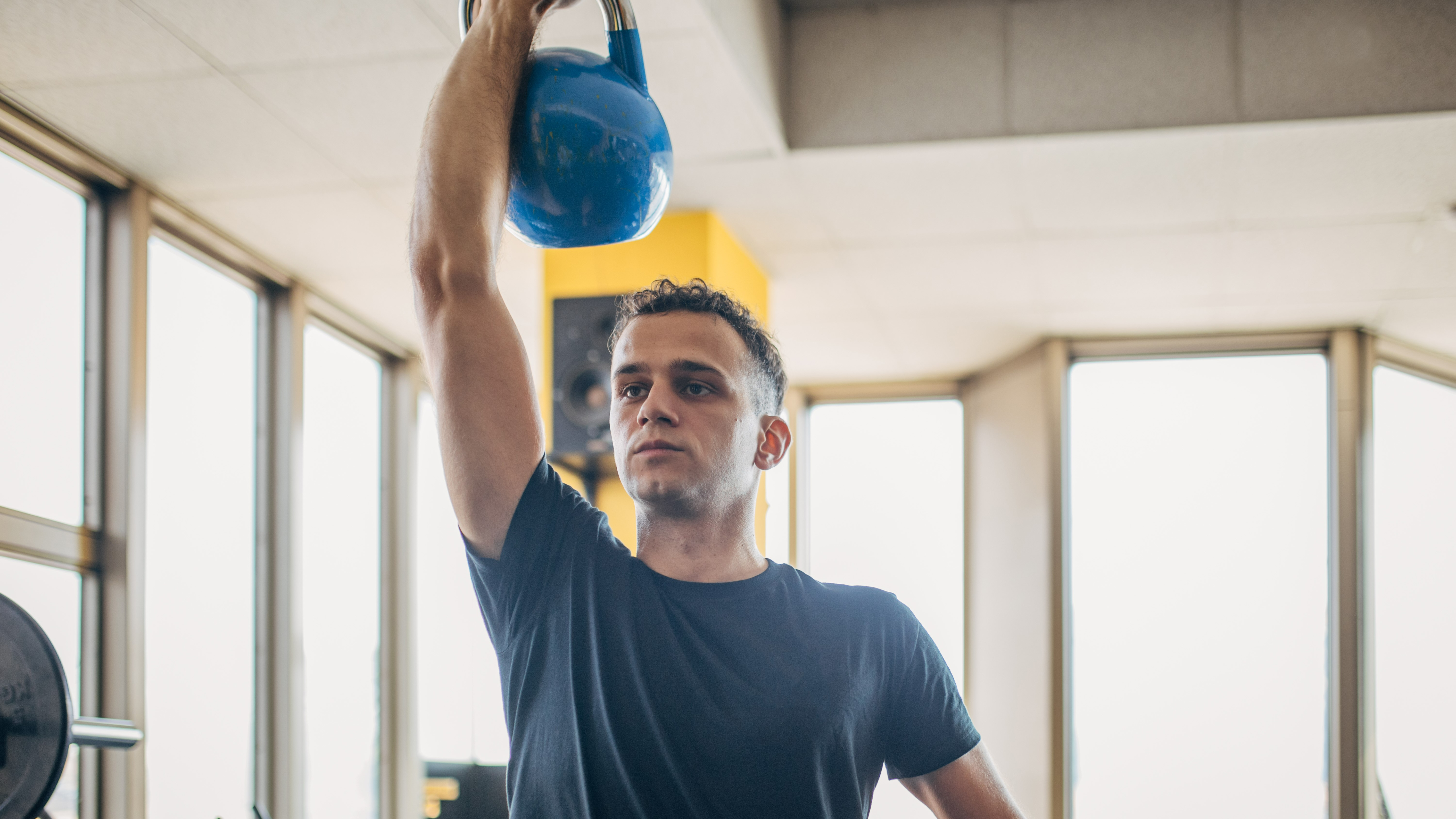I tried the kettlebell viper press every day for a week, and the results were surprising
Grab a kettlebell and try this full-body move

Working out with kettlebells can be a great way to build strength, increase endurance, and improve your mobility. The off-center weights challenge your whole body and can raise your heart rate, sometimes just with a single move.
The kettlebell viper press is one such exercise. At first glance, it may look like this movement primarily targets the shoulders, but pick up one of the best kettlebells to give it a try, and you’ll realize that the effects are much more wide-ranging.
Kettlebell sessions have become quite popular over the past few years, but I don't often incorporate them into my routine. So, I decided that I'd add the kettlebell viper into my workouts every day for a week to see how my body would respond.
And while I don't usually recommend doing the same moves every session — it can lead to training imbalances and injury — this short challenge alongside my usual exercises seemed like a good way to experiment.
How to do a kettlebell viper press
The kettlebell viper press is a multi-muscle compound exercise and requires effort from several different muscle groups, so you’ll work the shoulders, core, hamstrings, and glutes.
The standard viper uses a single kettlebell targeting each side of the body separately. If you want to challenge yourself, try grabbing two kettlebells and performing the viper press on both sides at the same time.
- Grab a moderately heavy kettlebell and come to the floor on your knees. Keep your spine neutral and your shoulders, hips, and knees directly aligned.
- Hold the kettlebell with your right hand, resting just above your right shoulder. The bell should be behind your right wrist, facing the wall behind you.
- Set your hips back behind you, aiming your tailbone towards the floor.
- Squeeze your glutes, quickly drive your hips forward, and press the kettlebell into the air. The momentum from your hips should help initiate the press of the kettlebell.
- Lower the kettlebell to the starting position with control.
- Continue for 10-12 repetitions or until you reach muscle fatigue. Repeat on the left side.
I did the kettlebell viper press every day for a week — here’s what happened
Ready to ditch the dumbbells for a few days, I grabbed a kettlebell, rolled out my mat, and tackled the viper press for a week. I performed three sets of 10 repetitions on each side to ensure I kept in balance. Here's what I found.
Get instant access to breaking news, the hottest reviews, great deals and helpful tips.
My glutes worked hard
Even though I knew the kettlebell viper press was a hip-hinge exercise that would work the glutes, I had no idea they’d have to work as hard as they did. By the end of my third set on my first day, my glutes felt as fatigued as they usually do after a set of heavy deadlifts.
That fatigue continued throughout the week. By the time I got to the last few days, I had gotten used to the movement more, but I still felt my glutes were working harder than any other muscle group when performing the exercise.
My knees started to hurt
One of kettlebell viper's downsides is that you do it kneeling on the floor, so it's not well-suited if you have sore knees. You can use a yoga mat or a rolled-up towel under your knees to make it a bit more comfortable, but you may still find that too painful.
In the past, I've had some knee pain, but it's not debilitating. However, as the week went on, I felt more discomfort in my knees during the exercise. I ended up adding a small towel on top of my yoga mat for some cushioning, and that seemed to help.
It improved my shoulder stability
The way the weight is distributed across a kettlebell is drastically different from that of a dumbbell or a barbell — this makes them especially useful for stability and mobility training, and I really felt it in the first few days of the challenge.
I could feel my rotator cuff muscles kicking into gear to maintain correct alignment. By the end of the week, I could see the benefits of this work, when my bench presses as rows felt significantly more stable than in previous efforts.
My core muscles were sore
I do a lot of core-focused exercises, and heavy overhead presses are a part of my normal routine, so I was very surprised that the kettlebell viper presses caused some soreness throughout my torso.
It wasn't a lot, and it didn't impact the challenge, but by the end of the week, I felt strong and stable enough to increase the load and exercise with a heavier kettlebell — an example of progressive overload in action.
It’s not uncommon to feel sore when working muscles differently, even if you exercise consistently. I would even venture to say I liked feeling a little bit sore — it’s been a long time since my abdominals have felt that way!
More from Tom's Guide
- The best kettlebell exercises for beginners to build muscle, strength, and power
- Three things I wish I'd known as a kettlebell beginner
- I did 50 kettlebell clean and jerks every day for a week — here's what happened

Jennifer Rizzuto is a freelance writer and certified personal trainer based in Long Island, NY. She covers various fitness-related topics and reviews for Tom's Guide. She also writes sketch comedy and short films, and performs frequently as an actor, singer, and improviser. When she's not writing, working out, or performing, you'll find her trying to convince her husband to get a dog.
